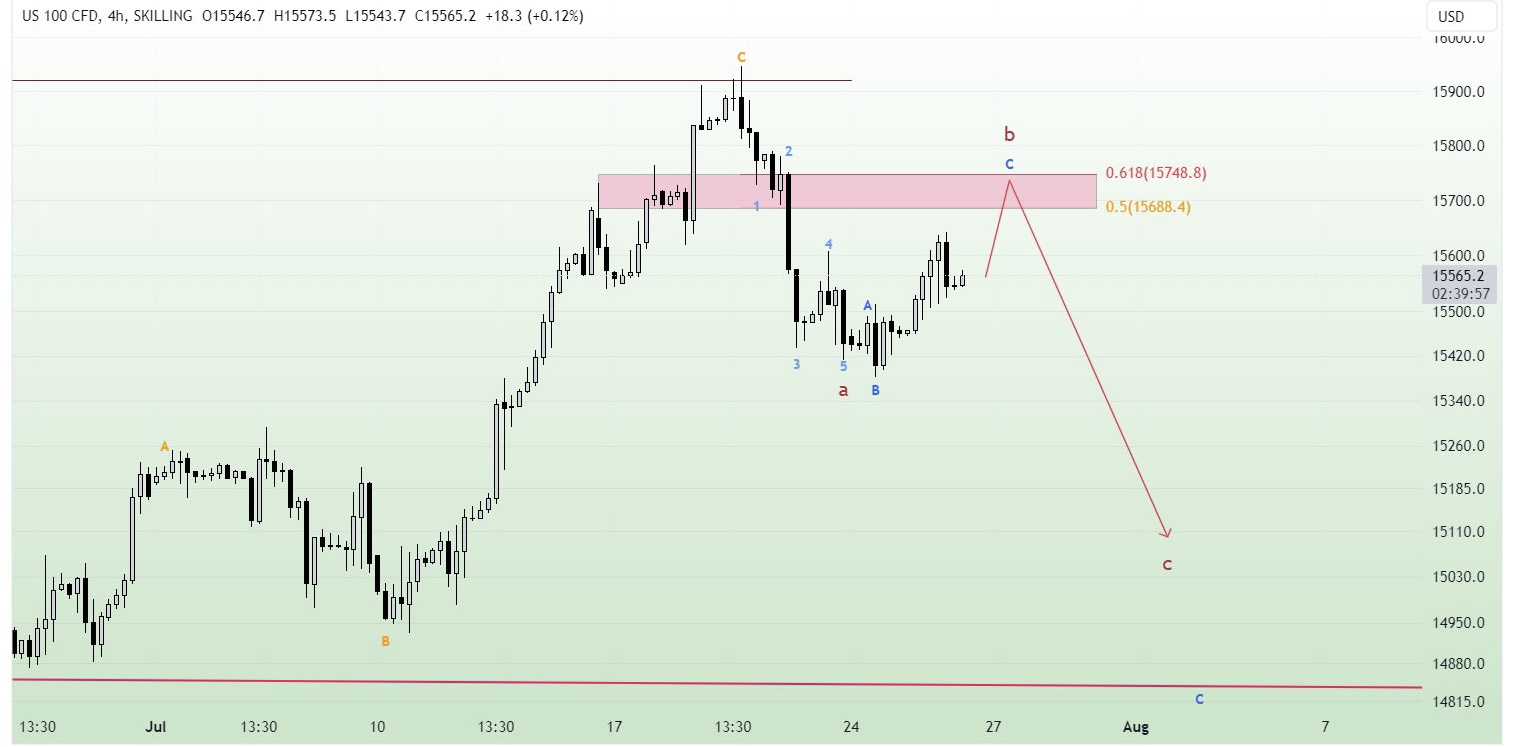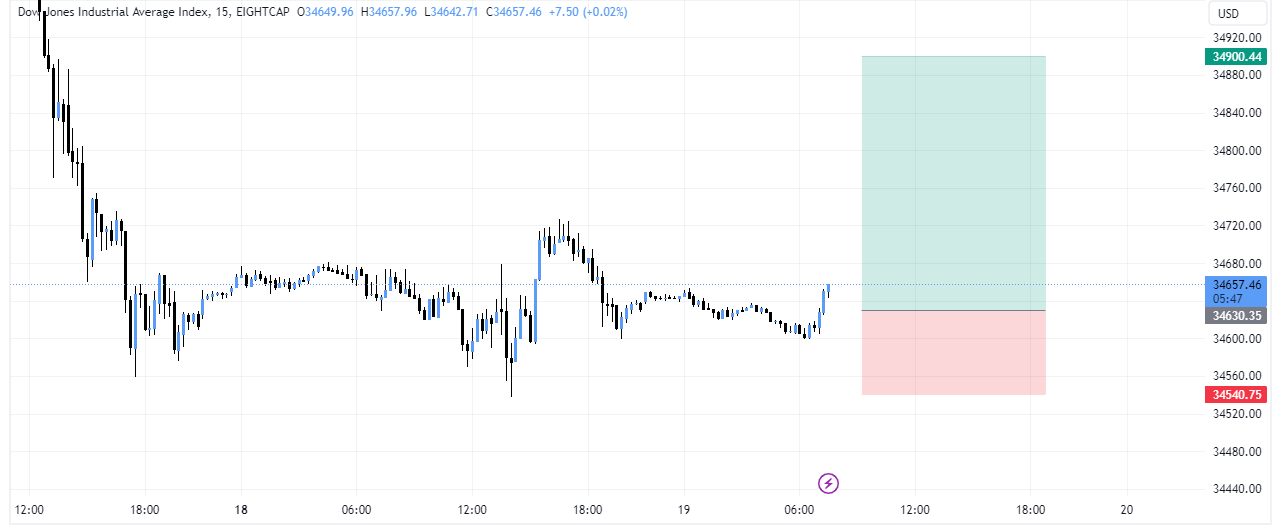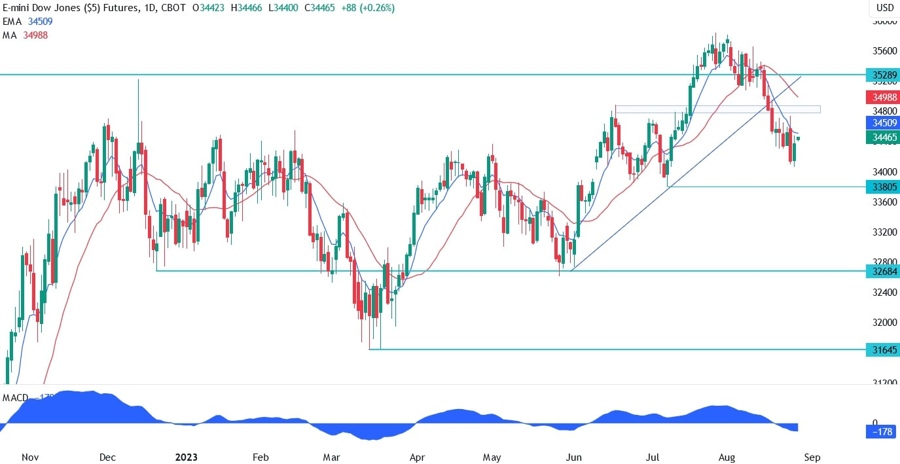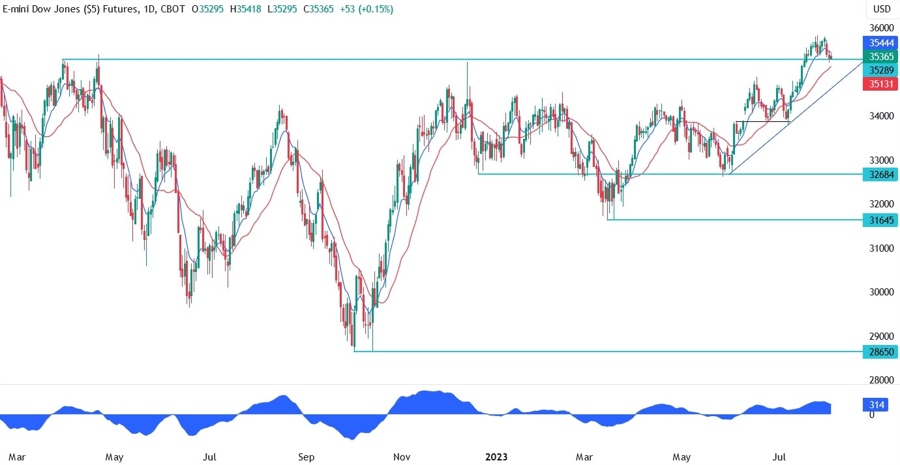Singapore Blue Chip Index-STI
Parent Index
NA
Indices informations
Listed Exchanges
| Singapore Exchange |
Related Instuments
Sector Represented
| Apparel |
| Finance |
| Technology |
| Insurance |
| Health Care |
Indices
- BSE SENSEX
- CAC 40
- CBOE NASDAQ-100 Volatility Index (VXN)
- CBOE Volatility Index (VIX)
- China50-FTSE China A50 Index
- DAX
- DAX PERFORMANCE-INDEX-GDAXI
- DE40-Germany 40 Index DAX
- Dollar Index USDX-DXY-DX-Dixie
- Dow Jones Industrial Average-DJIA
- EURO STOXX 50 SX5E
- FTSE 100 Index-UK100 Index
- Germany 30
- Hang Seng Index
- IBEX 35-Spain 35
- NASDAQ Composite
- NASDAQ-100
- Nikkei 225
- Russell 2000 Index
- S&P/ASX 200
- Singapore Blue Chip Index-STI
- Swiss Market Index (SMI) Switzerland Blue Chip Index
- TecDax Price Index
- TECHDE30-Germany Tech 30 Index
- US Tech 100 Index UT100
- US2000-US Small Cap 2000 Index
- US30-US Wall Street 30 Index
- US30M- US Wall Street 30 Index M
- US500-S&P 500 (GSPC, INX, SPX)
- US500-US SPX 500 Index
- US500M-S&P 500 Mini
- All Ordinaries
- Amsterdam Exchange Index AEX index
- ATX-Austrian Traded Index (ATX)
- BEL 20
- BELEX15
- BIRS
- BIST-Borsa Istanbul
- CROBEX
- EGX 30 Index Egypts Leading Stock Market Index
- FTSE All-Share Index
- FTSE Bursa Malaysia Index-KLCI Index
- FTSE MIB-FTSE MIB 40
- Índice Bursátil Caracas (IBC)
- Índice Bursátil de Capitalización-The General Index
- Indice de Precios y Cotizaciones
- KOSPI
- KSE 100 Index
- MDAX
- MERVAL
- MICEX-The MOEX Russia Index
- OBX Index
- OMX Copenhagen 20 (OMXC20)
- OMX Helsinki 25 (OMXH25)
- OMX Stockholm 30 (OMXS30)
- PSE Index (PSEi)
- PSI20-PSI-20
- S&P/NZX 50 Index
- S&P/TSX 60
- S&P/TSX Composite Index
- S&P/TSX Venture Composite Index
- SOFIX
- SSE Composite Index (上证综指) Shanghai Composite Index
- Straits Times Index (STI)
- SZSE Component Index (深证成指)
- TA-125 Tel Aviv 125 Index
- Taiwan Capitalization Weighted Stock Index (TAIEX)
- The Indice de Precio Selectivo de Acciones- IPC
- CBOE NASDAQ-100 BuyWrite Index (BXN)
- Hang Seng China H-Financials Index
- IBOVESPA-The Bovespa Index-Brazil Stock Exchange Index
- NASDAQ Financial-100
- SDAX – Small cap
- TecDAX
- aaa
- Amex Gold BUGS Index
- Amex Oil Index
- AScX index – Small cap
- ASE Weighted Index
- Athex 20
- Barrons 400 Index
- BELEXline
- BET-10
- BSE DCI
- BSE FCI
- BUMIX – Mid cap
- BUX – Large cap
- CA60-Canada 60 Index
- CAC All Share
- CAC All-Tradable
- CAC Large 60
- CAC Mid & Small
- CAC Mid 60
- CAC Next 20
- CAC Small
- Capital Markets Index
- CASPI
- CBOE DJIA BuyWrite Index (BXD)
- CBOE S&P 500 BuyWrite Index (BXM)
- CBV Index
- CBV Real Estate Index
- CECEEUR
- Central European Blue Chip Index – Regional large cap
- ChinaH-Hong Kong China H-shares Index
- COLCAP
- Colombo Stock Exchange Sector indices (CSE Sectors)
- CROBIS
- CSC X
- CSE 30
- CSE50
- CSI
- CSI 100 Index (中证100指数)
- CSI 300 Index (沪深300指数)
- Dow Jones Global Titans 50
- Dow Jones Transportation Average
- Dow Jones Utility Average
- DSE
- DSEX
- DSM200
- EGX 100 Index
- EGX 50 Index
- EGX 70 Index
- ERS10
- FIRS
- FT 30 Index
- FTSE 350 Index
- FTSE AIM All-Share Index
- FTSE AIM UK 50 Index
- FTSE All-World index series
- FTSE Fledgling Index
- FTSE Italia Mid Cap
- FTSE MID 250 Index
- FTSE SmallCap Index
- FTSE techMark Index
- FTSE/Athex Large Cap
- FTSE/JSE All Share Index
- FTSE/JSE Top 40 Index
- FTSEurofirst 300 Index
- FTSEurofirst Euro Supersector Indices
- GSE All-Share Index
- Hang Seng China Enterprises Index
- Hang Seng China-Affiliated Corporations Index
- HK50
- IDX Composite
- IGBC
- IPSA
- ISEQ 20-The Ireland Overall Stock Exchange Index-ISEQ20
- IT40-Italy 40 Index
- Jakarta Islamic Index (JII)
- Jamaica Stock Exchange (JSE)
- KASE
- KMI 30 Index
- KOSDAQ
- KSE All Share Index
- KSE-30 Index
- Kuala Lumpur Composite Index
- LASI
- LQ-45
- LuxX Index – Luxembourg Stock Exchange
- MADEX index
- Madrid Stock Exchange General Index
- MASI index
- MESDAQ
- MIDDE50-Germany Mid 50 Index
- MIDDE60-Germany Mid 60 Index
- Milanka Price Index (MPI)
- MSCI EAFE
- MSCI GCC
- MSCI Hong Kong Index
- MSCI World
- MSM-30
- NEPSE Index – Nepal Stock Exchange
- NETH25
- NIFTY 100 LOW VOLATILITY 30
- NIFTY 200
- NIFTY ALPHA 50
- NIFTY BANK
- NIFTY CPSE
- NIFTY ENERGY
- NIFTY FINANCE
- NIFTY FMCG
- NIFTY INDIA CONSUMPTION
- NIFTY INFRA
- NIFTY IT
- NIFTY MEDIA
- NIFTY METAL
- NIFTY MIDCAP 100
- NIFTY MIDCAP 50
- NIFTY MIDCAP LIQUID 15
- NIFTY MIDSMALLCAP 400
- NIFTY MNC
- NIFTY Next 50
- NIFTY PHARMA
- NIFTY PSE
- NIFTY PSU BANK
- NIFTY PVT BANK
- NIFTY REALTY
- NIFTY SERV SECTOR
- NIFTY SMALLCAP 100
- NIFTY SMALLCAP 250
- NIFTY SMALLCAP 50
- NIFTY100 EQUAL WEIGHT
- NIFTY100 LIQUID 15
- NIFTY200 QUALITY 30
- NIFTY50 EQUAL WEIGHT
- Nor25-Norway 25 Index
- NSE 30 Index
- NSE All Share Index
- NSE NIFTY 50
- NYSC Arca Major Market Index
- NYSE American Composite Index
- OMX Iceland 15 (discontinued)
- OMX Iceland 6
- OMX Stockholm PI (OMXSPI)
- OMX Vilnius (OMXV)
- OTCM QX ADR 30 Index
- Palisades Water Index (ZWI)
- PFTS index
- Philadelphia Gold and Silver Index
- PHLX Semiconductor Sector
- PSE All Shares Index
- PSE Financials Index
- PSE Mining and Oil Index
- PSI/GERAL
- PX Index
- RTS Index (RTSI)
- Russell 1000
- Russell 2500
- Russell 3000
- Russell MidCap
- Russell Small Cap Completeness
- S&P 100
- S&P 1500
- S&P Asia 50
- S&P BSE 500
- S&P Europe 350
- S&P Global 100
- S&P Global 1200
- S&P Latin America 40
- S&P MidCap 400
- S&P MidCap 400/BARRA Growth
- S&P MidCap 400/BARRA Value
- S&P SmallCap 600
- S&P SmallCap 600/BARRA Growth
- S&P SmallCap 600/BARRA Value
- S&P Vietnam 10 Index
- S&P/ASX 20
- S&P/ASX 300
- S&P/ASX 50
- SA40-South Africa 40 Index
- SBF 120
- SE30-Sweden 30 Index
- SET Index
- SET100 Index
- SET50 Index
- Slovak Share Index
- SMI Expanded
- SMI MID
- SPBLPGPT
- SSE 180 Index (上证180指数)
- SSE 50 Index (上证50指数)
- STOXX Europe 600
- SWI20-Switzerland 20 Index
- Swiss Leader Index (SLI)
- Swiss Performance Index (SPI)
- SZSE 100 Index (深证100指数)
- SZSE 200 Index (深证200指数)
- SZSE 300 Index (深证300指数)
- TA-35 Index
- TA-90
- Tadawul
- TEDPIX
- TEPIX
- The Global Dow
- The GSE Composite Index.
- THETAUSD Theta Network Token vs US Dollar
- TOPIX
- Trinidad and Tobago Stock Exchange (TTSE)
- UBS 100 Index
- Value Line Composite Index
- VN Index
- WIG-Warszawski Indeks Giełdowy
- WIG30
- Wilshire 4500
- Wilshire 5000
- Zimbabwe Industrial Index
- Zimbabwe Mining Index
Singapore Blue Chip Index – A Reflection of Singapore’s Economic Strength
When it comes to measuring the economic prowess and stability of a country, one of the commonly used benchmarks is its stock market performance. In that regard, the Singapore Blue Chip Index holds a prominent position as a barometer of Singapore’s financial health.
What are Blue Chip stocks?
Blue chip stocks are shares of companies that are considered to be of high quality, financially stable, and have a long track record of consistent performance. These companies are typically leaders in their respective industries and are known for their resilience even during challenging times.
In Singapore, the Straits Times Index (STI) serves as the main benchmark for the performance of blue chip stocks. Comprising 30 of the largest and most actively traded companies listed on the Singapore Exchange (SGX), the STI provides investors and analysts with insights into the overall health of Singapore’s economy.
The significance of the Singapore Blue Chip Index
The Singapore Blue Chip Index is not only important for investors but also for policymakers, economists, and business leaders. It serves as a reflection of the country’s economic strength, attracting both local and international investors seeking stable and reliable investment opportunities.
Being part of the index is a prestigious achievement for companies as it signifies their market leadership and ability to generate consistent profits. The inclusion of a company in the Singapore Blue Chip Index can contribute to increased investor confidence and better access to capital, enabling further growth and expansion.
Key constituents of the Singapore Blue Chip Index
The composition of the Singapore Blue Chip Index consists of companies from various sectors, including finance, telecommunications, real estate, transportation, and manufacturing. Some of the well-known constituents include:
- DBS Group Holdings: Singapore’s largest bank and a leader in the financial services sector.
- Singapore Telecommunications (Singtel): A telecommunications giant with a strong presence in Southeast Asia.
- CapitaLand: One of Asia’s largest diversified real estate groups.
- Singapore Airlines: An internationally acclaimed airline known for its exceptional service and operational excellence.
Implications for investors
Investing in blue chip stocks can be an attractive option for individuals seeking stability and long-term growth. The Singapore Blue Chip Index, with its diverse range of companies, provides investors with exposure to various sectors of Singapore’s economy.
Additionally, the index’s constituent companies often offer regular dividends, making them particularly appealing to income-focused investors. The stable performance of blue chip stocks, along with their potential for capital appreciation, adds to their appeal as core holdings in investment portfolios.
Conclusion
The Singapore Blue Chip Index is not just a collection of stocks but a reflection of Singapore’s economic strength and stability. It serves as a testament to the country’s robust business environment and its ability to attract and nurture successful companies across industries.
As investors continue to seek reliable investment options, the Singapore Blue Chip Index remains a key indicator of the country’s financial health and an attractive avenue for long-term wealth creation.
The Singapore Blue Chip Index is a key benchmark index that represents the performance of some of the largest and most established companies listed on the Singapore Exchange. It serves as a gauge for investors to assess the overall health and direction of the Singapore stock market.
What are Blue-Chip Indices?
Blue-chip indices, such as the Singapore Blue Chip Index, are comprised of stocks from companies with a strong market presence, solid financials, and a history of stable performance. These companies are typically leaders in their respective industries, often having a long-standing reputation for reliability and stability.
Blue-chip indices act as a barometer for the overall market sentiment and provide insights into the economic conditions of a country or region. They are considered less volatile compared to other indices, making them a popular choice among conservative investors.
The Components of the Singapore Blue Chip Index
The Singapore Blue Chip Index, also known as the Straits Times Index (STI), consists of 30 of the largest and most actively traded companies listed on the Singapore Exchange. These companies span various sectors, including finance, telecommunications, real estate, and manufacturing.
Some prominent constituents of the STI include DBS Group Holdings, United Overseas Bank, Singtel, CapitaLand, and Singapore Airlines. These companies have a significant impact on the Singapore economy and serve as a reflection of its overall performance.
Importance of the Singapore Blue Chip Index
The Singapore Blue Chip Index plays a crucial role in guiding investors’ decision-making processes. It provides them with a comprehensive view of the performance of Singapore’s leading companies and allows for easy comparison against other global blue-chip indices.
Investors often use the STI as a benchmark to measure the performance of their investment portfolios. By comparing their returns with the index, they can assess whether their investments are outperforming or underperforming the market. This information helps investors make informed decisions regarding asset allocation and portfolio diversification.
Impact on the Economy
The performance of the Singapore Blue Chip Index has a direct correlation with the overall state of the Singaporean economy. As the index represents the performance of key sectors, any significant movement in the STI is likely to have a ripple effect throughout the economy.
A rising index indicates investor confidence and positive economic growth, stimulating business activities and attracting foreign investments. On the other hand, a declining index may signal economic difficulties, impacting consumer sentiment and investment decisions.
Conclusion
The Singapore Blue Chip Index, or Straits Times Index, holds immense importance as a key indicator of the Singapore stock market’s overall health and performance. Comprised of 30 leading companies across various sectors, it serves as a benchmark for investors and provides valuable insights into the economy.
As blue-chip indices are considered less volatile, they are favored by conservative investors seeking stable returns. The STI’s performance influences investment decisions, asset allocation, and serves as a gauge for the broader economic conditions of Singapore.
Fundamental Summary
- Coming soon!!










